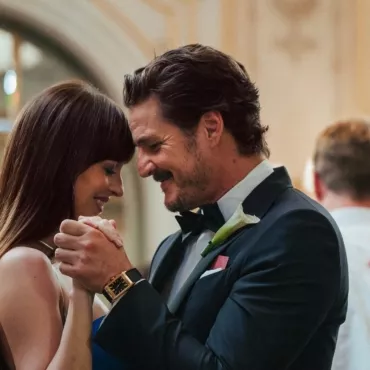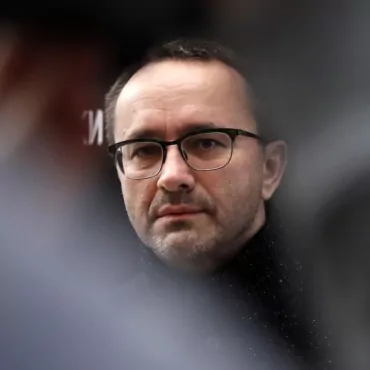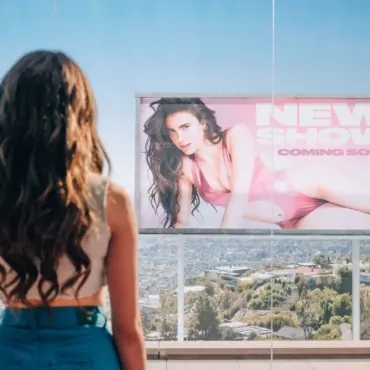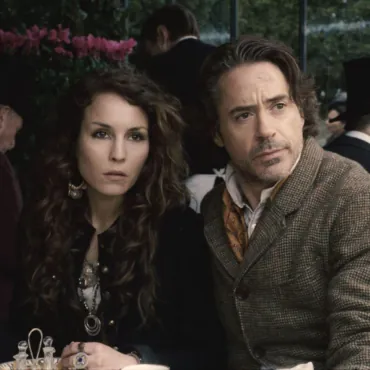“Lock, Stock and Two Smoking Barrels.

Guy Ritchie’s comedy was the first of the director’s career. Before entering the movie industry, he worked as a music video maker and made short films. In the end, from one short film grew a whole feature-length movie, produced by Sting’s wife Trudie Styler. At the same time, one of the conditions was the participation of the artist in the movie. “Maps” was the debut not only for Ritchie, but also for actors Jason Statham and Vinnie Jones. The latter went to the set directly from the police station, where the day before he got after a fight.
Some are comparing the movie to Pulp Fiction and calling it the British version. Chases, criminal showdowns and lots of black humor – all the ingredients of a perfect action movie are here.
“…And Inside I’m Dancing.”

The tape brought fame to James McAvoy, who played one of the main characters of the movie – Rory O’Shea. The guy is confined to a wheelchair due to muscle atrophy, but despite this, he does not lose optimism. Rory energizes Michael, who is in a clinic for cerebral palsy, and together they push for the right to live outside the hospital. The world outside the asylum turns out to be not always simple and straightforward, but much more interesting than the hospital room.
The film is based on a story by writer Christian O’Reilly, who worked at the Dublin Independent Living Empowerment Center. There he met a young man suffering from cerebral palsy, who inspired the writer’s work. To prepare for the role, James McAvoy interacted extensively with patients with Duchenne muscular dystrophy. As the actor said, he was impressed by such an experience, in particular, by the fact that the patients preferred to avoid any communication because of the pity for them of others.
“Barry Lyndon.”

Stanley Kubrick’s movie is based on William Thackeray’s novel about an Irish hero aspiring to high society. The action takes place in the 18th century: young Redmond Barry, persecuted for murder by the police, after a series of events becomes a member of the English army. Hoping to sneak back to Ireland, the hero unexpectedly joins the Prussian army and at the same time considers inbreeding with a German noblewoman.
The big three-hour-long movie won four Oscar statuettes, but not in the major categories. In 1976, the film academicians appreciated the work of costume designers and painters, the camerawork of John Olcott, Kubrick’s permanent cameraman, and the musical accompaniment. The movie is still called one of the most beautiful and stylish films of the director. Kubrick did depart from the original novel, for example, instead of a first-person narrative, he introduced the figure of a narrator who constantly inserts his lines about the characters and explains to the audience what is happening on the screen. At one time this confused movie critics, but Kubrick explained his decision this way: ‘Barry Lyndon’ is a story in which there is no room for surprises. What matters is not what happens next, but how it happens.”
“Trainspotting.

One of the craziest movies in British cinema is firmly associated with Scotland’s capital city. You can use it to compare how the city has changed in 25 years, because part of the action takes place in the center of Edinburgh. The heroes escape a chase down the main shopping street of Princes Street, escape their pursuers on Hanover Street against the backdrop of the Royal Scottish Academy and hide under the bridge on Calton Street. There’s even a glimpse of Edinburgh Castle in one shot.
In terms of plot, the director drew from Irvine Welsh’s original novel and the theater production based on the book. One of the actors, Ewan Bremner, played in both the play and Danny Boyle’s movie. The film was criticized many times for the theme of drug use and antisocial main characters, but still the main idea of the creators was to condemn this culture and the consequences of this lifestyle. Nevertheless, for its story and acting, in 2012 the movie became the best British film of the last 60 years according to the people of the UK. The music for Trainspotting also deserves special attention. The soundtrack features prominent representatives of British and American rock: Iggy Pop, Blur, New Order, Underworld and others.
“A Clockwork Orange.

The satirical dystopia A Clockwork Orange was originally published as a book by Anthony Burgess. The novel so shocked Stanley Kubrick’s friend writer Terry Southern that he immediately gave him the book. At the time, Kubrick was busy filming 2001: A Space Odyssey and was not interested in the novel. He was confused by the peculiar language, Nadsat, in which the teenagers in the book communicated. Kubrick was sure that the mixture of English and Russian would be difficult to convey through the screen and some of the dialog would be lost. A few years later, the director returned to the project and wrote his own screenplay based on the book, including words in the fictional Nadsat language.
After its premiere in 1971, some admired the movie, while others, on the contrary, were horrified by the amount of violence on screen. The director even started receiving anonymous threats, after which he advised theaters to withdraw the film from distribution. It was also banned from screening in Ireland and Singapore for several years. Surprisingly, A Clockwork Orange managed to become one of Warner’s most profitable projects, with the film earning almost a million dollars at the British box office in its re-release.
“Lawrence of Arabia.”

David Lean’s epic three-hour film tells the story of World War I hero Thomas Edward Lawrence, an English spy. He is known for having made a significant contribution to the victory of the Arab revolt against the Ottoman Empire as a soldier in the British Army in the Middle East. He managed to infiltrate the Arabs and lead a guerrilla movement. For his actions, the locals nicknamed him Lawrence of Arabia. The script was based on the scout’s book, The Seven Pillars of Wisdom, as well as scholarly research papers on his life. During filming, director David Lean wanted to emphasize that this is a “road trip movie,” so all the movements in the film take place from left to right, as if forward, deep into the narrative.
At the “Oscars” in 1963, the tape collected a whole bunch of awards: seven statuettes, including the main prizes for best film and best director. The picture made famous the performers of the main roles of Peter O’Toole and Omar Sharif, making them real stars of the movie. In a poll by Empire magazine, “Lawrence of Arabia” was ranked number one on the list of “The 100 Greatest British Films of All Time” and the British Film Institute put it in third place.
“Kes.”

It is one of director Ken Loach’s early works, ranked by the British Film Institute as one of the best domestic films of the 20th century. As in his subsequent works, in the movie “Kes” the director turns to the social theme and tells about the lives of ordinary people, including with the help of non-professional actors. In the story, Billy, a boy from a dysfunctional family who is not accepted by his peers, finds a young falcon and begins to train it. He gives him the name Kes.
The film featured non-professional actors, except for the performer playing the role of Mr. Farthing. Natural light was also used for filming without any additional equipment, and the cameraman was Chris Menges, a master filmmaker and two-time Oscar winner.
“Stairway to Heaven” (A Matter of Life and Death)

The action of the picture takes place at the end of the Second World War. Peter Carter’s plane crashes and the pilot goes on the air for the last time. He contacts air traffic control, where he is answered by a girl named June, after which he jumps out of the falling airplane and miraculously survives. It turns out that because of the fog, the angel guide didn’t find Peter and didn’t take him with him. The film unfolds simultaneously in two universes: the real world (color film) and Stairway to Heaven (black and white). By the way, for this the team had to build a huge escalator of 106 steps, each of which was six meters wide. It took three months and about three thousand pounds to make, which is massive for a modern movie, not like the 1946 film.
A romantic story with a touch of sci-fi is not really the director’s original idea. After World War II, the script was commissioned by the British government – to improve British-American relations. In 2018, the movie was prepared for a re-release. For this, Martin Scorsese’s editor Thelma Schoonmaker performed a digital 4K restoration of the tape to restore the original colors and soundtrack.
Photo: Legion-media
